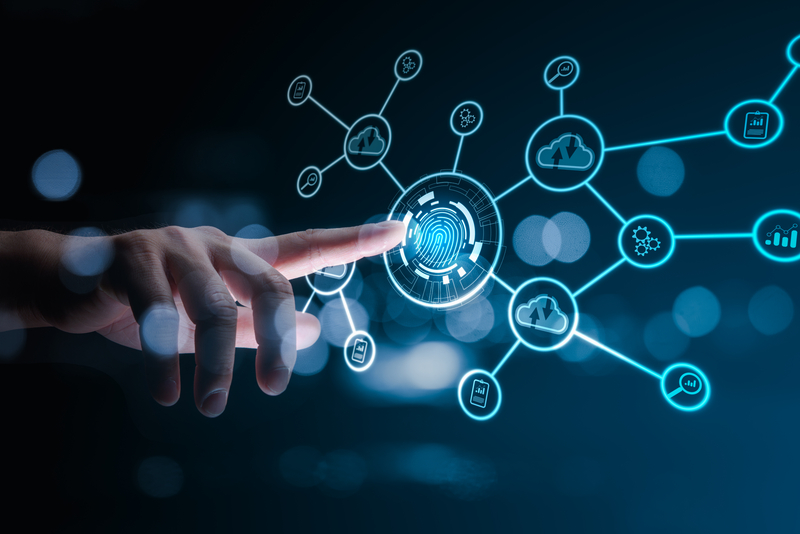Identity and Access Management (IAM): Strategies and Cybercrime Adaptations

Strong 8k brings an ultra-HD IPTV experience to your living room and your pocket.
Introduction:
Identity and Access Management (IAM) refers to the framework of policies, technologies, and procedures that ensure the right individuals have access to the right resources at the right times for the right reasons. In an increasingly digital world, IAM plays a critical role in securing sensitive data and protecting organizations from unauthorized access.
Key Components of IAM
1.Identification: The process of recognizing users through unique identifiers.
2.Authentication: Verifying the identity of a user through various methods, such as passwords, biometrics, or multi-factor authentication (MFA).
3.Authorization: Determining what resources an authenticated user can access and what actions they can perform.
4.Accountability: Keeping track of user activities to ensure compliance and for auditing purposes.
Strategies for Effective IAM
To combat evolving threats, organizations must implement robust IAM strategies. Here are some effective approaches:
1.Zero Trust Architecture: This model assumes that threats could be internal or external and thus requires continuous verification of user identities and devices, regardless of their location.
2.Role-Based Access Control (RBAC): Access rights are granted based on roles within the organization, minimizing the risk of excessive permissions.
3.Identity Governance: Continuous monitoring and auditing of user access rights help maintain compliance with regulations and mitigate insider threats.
4.Automated Provisioning and De-provisioning: Streamlining the onboarding and offboarding processes ensures that users have access only when necessary.
5.Regular Risk Assessments: Conducting frequent assessments helps identify vulnerabilities and adjust IAM policies accordingly.
Emerging Innovations in IAM
The landscape of IAM is rapidly evolving, with several innovations enhancing security and usability:
1.Artificial Intelligence (AI) and Machine Learning (ML): These technologies are used for anomaly detection, predicting potential security breaches, and automating threat responses.
2.Biometric Authentication: Fingerprints, facial recognition, and voice authentication provide more secure and user-friendly methods for verifying identities.
3.Decentralized Identity (DID): Using blockchain technology, DID allows users to control their own identity data, reducing reliance on centralized databases and minimizing the risk of large-scale breaches.
4.Passwordless Authentication: Solutions such as hardware tokens, one-time passwords (OTPs), and biometric methods reduce the reliance on traditional passwords, which are often vulnerable to attacks.
Cybercrime Adaptations in IAM
As organizations innovate their IAM strategies, cybercriminals are quick to adapt and exploit weaknesses. Here are some strategies employed by cybercriminals in relation to IAM:
1.Phishing Attacks: Sophisticated phishing schemes target users to gain their credentials, exploiting weaknesses in user awareness and training.
2.Credential Stuffing: Attackers use stolen credentials from one breach to access accounts on different platforms, relying on users’ tendency to reuse passwords.
3.Social Engineering: Manipulating individuals into divulging sensitive information or granting access to systems remains a prevalent tactic.
4.Exploiting IAM Misconfigurations: Many organizations overlook proper IAM configurations, leaving doors open for unauthorized access. Cybercriminals often exploit these vulnerabilities.
5.Supply Chain Attacks: Targeting third-party vendors with weaker security protocols enables attackers to gain access to larger networks through trusted connections.
Conclusion
As IAM continues to evolve, organizations must stay ahead of emerging threats by adopting innovative strategies and technologies. A proactive approach, focusing on education, robust security measures, and regular assessments, can help mitigate risks. Understanding the tactics employed by cybercriminals is essential for developing a comprehensive IAM framework that not only protects sensitive information but also fosters trust and compliance in an ever-changing digital landscape.
See the full article
Note: IndiBlogHub features both user-submitted and editorial content. We do not verify third-party contributions. Read our Disclaimer and Privacy Policyfor details.







